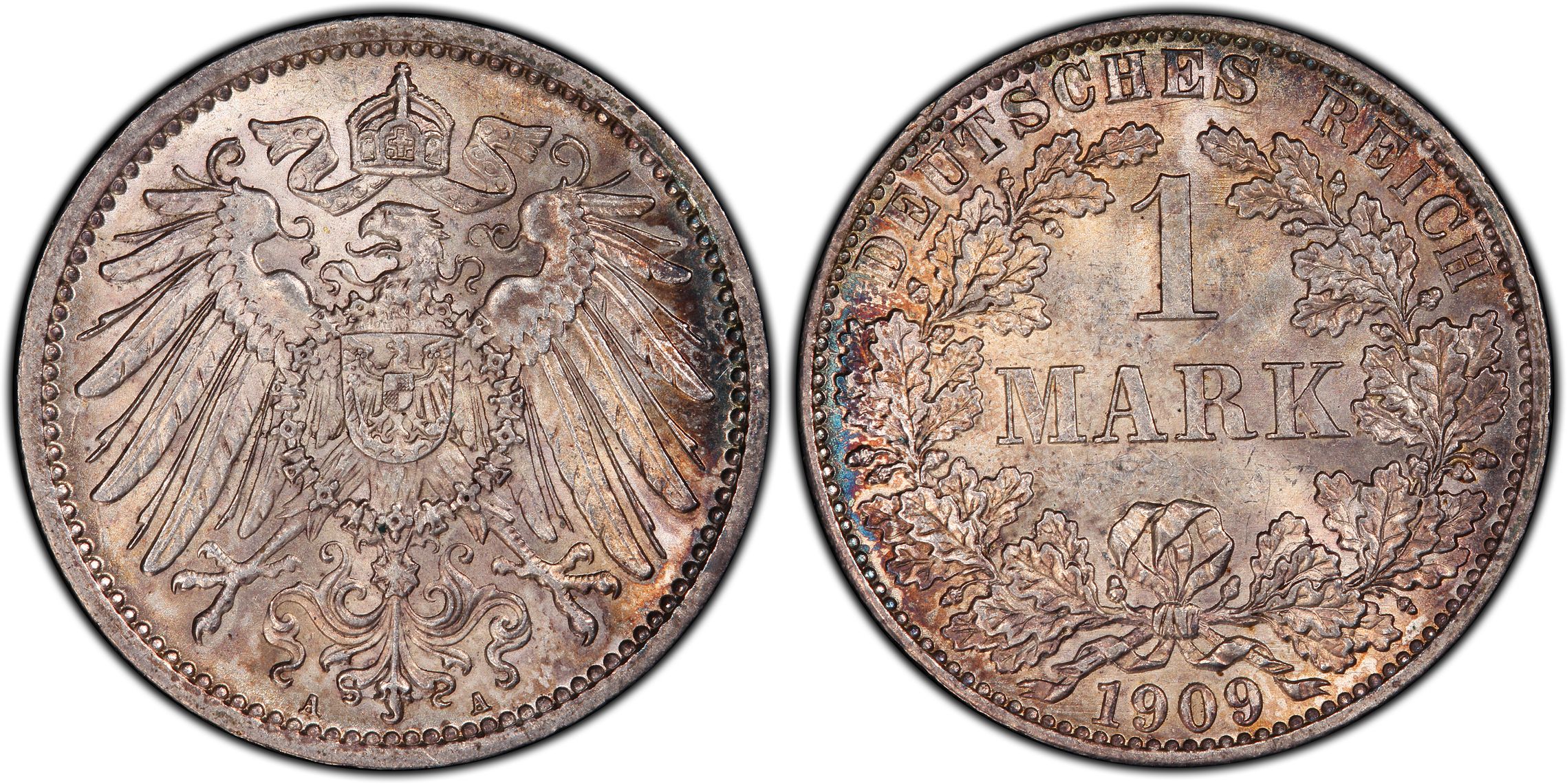Imperial Germany and German States
 coinkat
Posts: 23,972 ✭✭✭✭✭
coinkat
Posts: 23,972 ✭✭✭✭✭

Experience the World through Numismatics...it's more than you can imagine.
0
 coinkat
Posts: 23,972 ✭✭✭✭✭
coinkat
Posts: 23,972 ✭✭✭✭✭

Experience the World through Numismatics...it's more than you can imagine.
Comments
Experience the World through Numismatics...it's more than you can imagine.
How does one get a hater to stop hating?
I can be reached at evillageprowler@gmail.com
Mostly true EVP, but several of the German States maintained the right to mint coins after unification. Keep in mind that after unification The German Empire consisted of 4 kingdoms, as well as a bunch of grand duchies, duchies, principalities and a couple of free cities. Many of those still had their own royalty running them.
World Collection
British Collection
German States Collection
The only reason I referenced German States is because some coinage and issuance of postal stamps remained up to the States.
As for the date/year Bismarck became Chancellor, off hand I don't recall. I believe he retired around 1890
Experience the World through Numismatics...it's more than you can imagine.
I bought this coin for an unusual reason, a similar one was part of the loot of the 1946
Hesse Jewel robbery, committed by three American Army officers stationed in Germany.
Germany Prussia 10 Marks 1888-A (Berlin) - Frederick III
3.98 grams, 0.900 gold, 19mm, NGC graded MS-61
More here:
https://forums.collectors.com/...atid=6&threadid=803295
The Mysterious Egyptian Magic Coin
Coins in Movies
Coins on Television
Place holder for my paternal Grandfather's birth year.
The German Empire was officially proclaimed 18 Jan 1871.
Bismark was appointed the first chancellor on 21 March 1871. He was fired 20 Mar 1890 by Wilhelm II.
The title "German Emperor" was chosen after "Emperor of Germany" and "Emperor of the Germans" were ruled out.
Both sweet. Quick question: I always thought that 1872 is the demarcation between German States and Imperial Germany eras. Not strictly true? Not a little bit true? Or, am I thinking of 1872 solely because of the Franco-Prussian War? When did Kaiser Wilhelm install von Bismarck as Chancellor?
In 1871, Germany was unified. In a legal act that year or the following they created the new monetary standard based on the 10 Mark gold coin. All coins 1872 and onward were minted using the Germany mark as the currency. There are a few Mecklenburg-Schwerin and Mecklenburg-Strelitz minor coins minted in 1872 based on the mark. As far as I know, those are the only 'german states' coins minted after 1871. In new legislation a few months later, they were demonetized and German Empire minors were legitimate coinage. Individual states were allowed to dictate the amount of gold and silver coins they minted after 1872, but at that point most everything else was standardized.
In the US, you will see gold and silver german coins from 1872-1915 advertised as German States coins in some auctions like Heritage and in coin shops. That's not the prevailing treatment outside of the US (and maybe even inside). They're normally, and more appropriately, treated as being Kaiserreich or German Empire coins most places. This is a pretty common misconception and inconsistency.
IG: DeCourcyCoinsEbay: neilrobertson
"Numismatic categorizations, if left unconstrained, will increase spontaneously over time." -me
[URL=http://s1075.photobucket.com/u...4_zpsthbdg0mw.jpg.html]